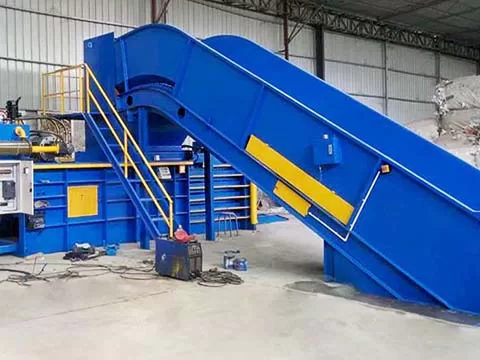Automatic baler plays a crucial role in streamlining material baling processes across industries. This article explores two key aspects of automatic balers: optimizing baling processes for enhanced efficiency and their contribution to environmental sustainability. By delving into these topics, we aim to uncover strategies and advancements that promote productivity and eco-consciousness in the realm of automatic baler.

Optimization of Baling Processes
Efficient baling processes are essential for maximizing productivity and achieving optimal bale quality. To optimize these processes, several factors need consideration. One vital aspect is bale density, which directly impacts storage space and transportation costs. Automatic balers equipped with advanced control systems allow operators to adjust compression force, ensuring the creation of dense bales while avoiding material damage.
Another key consideration is cycle time, as minimizing downtime can significantly boost productivity. Automatic balers with improved ram speed and cycle control mechanisms facilitate faster baling cycles, reducing idle time and increasing throughput.
Furthermore, material flow optimization is crucial in maintaining a steady supply of materials to the baler. Integrated systems that include conveyors, sensors, and automation technology enable seamless material feeding, reducing manual intervention and potential bottlenecks.
To enhance efficiency, modern automatic balers utilize automation and sensor technologies. These advancements allow for real-time monitoring and adjustment of baling parameters. By integrating data analytics and machine learning, these systems can optimize baling processes by identifying patterns, detecting anomalies, and suggesting parameter adjustments for improved performance.
Environmental Impact and Sustainability
Automatic baler contributes significantly to environmental sustainability through effective material baling and waste management. By compressing materials into compact bales, automatic balers facilitate efficient storage, transportation, and recycling. This reduces the need for additional space, lowers transportation costs, and minimizes the carbon footprint associated with material handling.
Moreover, automatic baler plays a vital role in promoting recycling and waste reduction initiatives. They enable the sorting and processing of recyclable materials such as cardboard, paper, plastics, textiles, and metals, diverting them from landfills. By optimizing baling processes, automatic balers ensure the production of high-quality bales that are readily accepted by recycling facilities.
In recent years, advancements in automatic baler design have also focused on environmental sustainability. Energy-efficient components, including variable frequency drives, intelligent power management systems, and optimized motor control, minimize energy consumption during baling operations. Additionally, the use of eco-friendly materials in the construction of automatic balers and the integration of renewable energy sources further contribute to their sustainability.
Conclusion
Automatic baler offers immense potential for optimizing baling processes, enhancing efficiency, and promoting environmental sustainability. By leveraging advanced technologies, these machines play a crucial role in advancing productivity and eco-consciousness in material handling operations.

